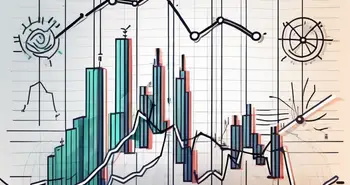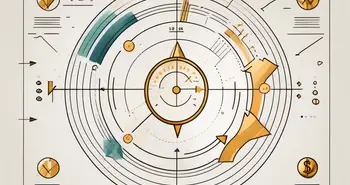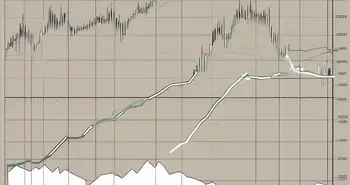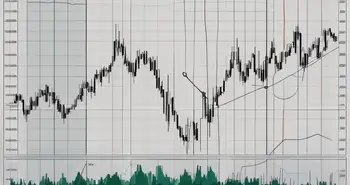Gann Theory: Precision Trading Through Geometric Analysis
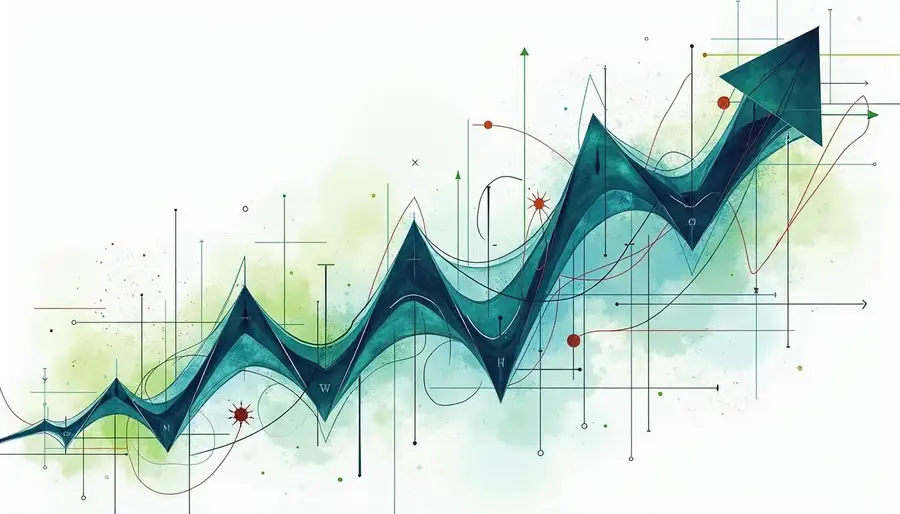
For many traders, finding patterns in market movements can feel elusive. Gann Theory, however, offers a structured and time-tested approach that has the potential to transform how we view price action. Developed by W.D. Gann, this method goes beyond typical technical analysis, combining geometry, time cycles, and price levels to predict future market behavior with surprising accuracy. It’s not just theory—Gann’s insights have been successfully applied by traders for decades. In this article, we’ll dive straight into the key elements of Gann Theory and explore how its practical application can elevate your trading strategy, whether you're navigating stocks, commodities, or crypto markets.
What is Gann Theory?
Gann Theory is a unique approach to market analysis developed by the legendary trader and forecaster, W.D. Gann. Its foundations lie in the principles of geometry, mathematics, and time cycles, which Gann believed were the key drivers of price movement in financial markets.
The Origins of Gann Theory
Gann Theory traces its roots back to the early 20th century when W.D. Gann began his career as a trader. Over the years, he developed his unique approach to market analysis, drawing inspiration from ancient mathematics and esoteric teachings.
Through extensive research and analysis, Gann discovered that certain geometric and mathematical principles held true across different financial markets and timeframes. He then formulated a set of rules and techniques that allowed him to forecast price movements with astonishing accuracy.
Gann's fascination with geometry was not limited to its aesthetic appeal; he believed that geometric patterns had a direct correlation to market dynamics. Squares, circles, and angles, in his view, played a significant role in understanding the ebb and flow of financial markets. By studying these patterns, Gann was able to identify key support and resistance levels, as well as potential turning points in price.
Key Principles of Gann Theory
Gann Theory, created by W.D. Gann, combines geometry, mathematics, and time cycles to forecast price movements in financial markets. While it may sound complex, we’ll break it down step by step so you can apply these concepts to your own trading.
1. Markets Move in Cycles and Patterns
Gann believed that markets move in repeated cycles and patterns. He noticed that certain price movements tend to occur over and over again, reflecting natural laws and universal geometry. By studying these patterns, traders can anticipate future price changes.
Look for recurring market patterns in historical price data. Pay attention to specific intervals, like 90, 180, or 365 days, and mark these on your charts to identify when key market reversals might occur. You can also track trends by observing how price moves in cycles of uptrends or downtrends.
2. Price and Time Equilibrium
One of the most important concepts in Gann Theory is the relationship between price and time. According to Gann, when price moves in sync with time, markets are stable. When price moves faster or slower than time, it can signal a market correction or reversal.
Use the Gann Angle Tool available in most charting software. The 1×1 Gann angle represents a balance between price and time. If the market stays above this angle, it's bullish, and if it drops below, it's bearish. Use these angles to spot potential support and resistance levels.
3. The Law of Vibration
Gann believed that everything in the universe, including stocks and commodities, has a vibrational frequency. This frequency is related to price movement, which can be calculated using certain numerical relationships. By understanding an asset’s natural vibration, you can predict its price direction.
Study historical price levels and time intervals to understand the “frequency” of a particular market or stock. Pay attention to how long trends last and how much the price moves during these trends. This will give you a sense of the natural rhythm of the market you're trading.
4. Gann Angles
Gann developed a set of geometric angles to understand market trends. Each angle represents a different rate of ascent or descent in the market. The most popular is the 1×1 angle, but others include the 2×1, 3×1, and so on. These angles help traders measure the strength of a trend.
Apply Gann angles to your price charts. The 1×1 angle (a 45-degree angle) suggests that the market is moving in harmony with time and price. A break above the angle indicates that price is moving faster than time, which could signal an acceleration of the trend. A break below could mean a slowdown or reversal.
5. Time Cycles
Gann emphasized the importance of time cycles—regular intervals at which markets tend to repeat certain behaviors. These cycles could be based on days, months, or years and are essential for predicting major market tops and bottoms.
Plot significant market highs and lows, and measure the time between them. Look for recurring cycles, like every 30, 90, or 180 days. These time cycles will give you a sense of when the market is likely to shift direction again.
6. Geometrical Patterns and Ratios
Gann applied geometry to the markets, using squares, triangles, and circles to predict price movements. He believed that price fluctuations are governed by geometric relationships, particularly the angles created by price movements over time.
Draw geometric shapes, like the Gann Square or Gann Fan, on your charts to identify future support and resistance levels. These shapes can reveal critical price points based on the natural progression of the market.
Applying Gann Theory in Financial Markets
Now that we understand the underlying principles and mathematical concepts of Gann Theory, let's explore how this powerful tool can be applied in real-world trading scenarios.
Gann Theory in Stock Market Analysis
When applied to stock market analysis, Gann Theory can help traders identify key support and resistance levels, predict trend reversals, and determine precise entry and exit points. By combining Gann's geometrical analysis and time cycles with other technical indicators, traders can gain a deeper understanding of stock market dynamics and make more informed investment decisions.
Gann Theory in Forex Trading
Gann Theory is equally applicable to the forex market, where currency pairs exhibit similar patterns and cycles. Traders can use Gann's geometric tools and time analysis to identify potential areas of support and resistance, establish trend lines, and predict future price movements. This allows forex traders to execute trades with greater precision and enhance their overall profitability.
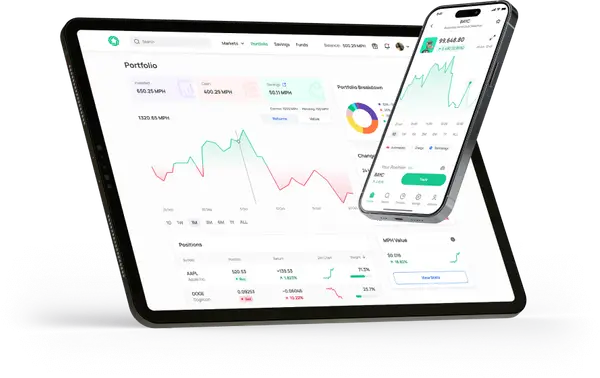
Take your trading strategy further by applying Gann Theory on Morpher's platform. Use real-time data to analyze support and resistance levels and predict market trends with precision. Morpher offers zero-commission trading, giving you easy access to stocks and commodities while providing the tools you need for the ultimate decision-making. Gain the advantage of seamless execution and cutting-edge insights in every trade.
Get started with Morpher today!
Gann Indicators: What Are They and How Do You Use Them?
Now that we’ve explored the foundational concepts of Gann Theory, such as price-time balance, market cycles, and geometric patterns, let’s dive into one of the most practical aspects of Gann’s approach: Gann Indicators.
Gann indicators are based on the idea that markets move in cycles and angles. Gann believed that prices and time are proportionally connected, and by dividing time and price into equal parts, traders can forecast future price trends with more accuracy.
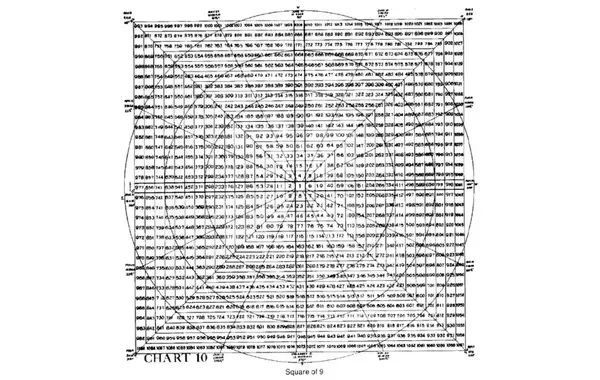
How to Use Gann Indicators
The main tools Gann used were Gann Angles, which can be used to:
- Identify Support and Resistance: By plotting Gann angles on your chart, you can see where the market may find support in an uptrend or resistance in a downtrend.
- Predict Future Price Movements: Gann angles help traders anticipate price movements over time. If a price breaks a key Gann angle, it usually heads toward the next angle, providing you with potential entry or exit points.
Timing Market Reversals with Gann Indicators
Timing is a critical component of Gann Theory. Gann believed that price and time have a direct relationship, and that when the two are “squared” (meaning price has moved the same number of units as time), a major market reversal is likely.
To time market tops and bottoms, look for instances when the market has completed a price move that equals a significant time interval. Gann angles can be used to project when these reversals are likely to occur.
Gann Angles: Practical Application
Gann Angles are diagonal lines that move at a constant speed on a chart. These lines help predict how quickly or slowly the price might move, and they’re used to spot major turning points in the market.
How to Draw Gann Angles
Gann angles are drawn from key tops or bottoms on your price chart, with the most important angles being the 1×1, 2×1, and 1×2. Here’s how they work:
1×1 Angle: This moves one unit of price for every unit of time (also known as the 45-degree angle). It reflects a perfectly balanced market trend.
2×1 Angle: This moves two units of price for every one unit of time, signaling a strong upward trend.
1×2 Angle: This moves one unit of price for every two units of time, indicating a slower trend.
Many charting platforms offer built-in tools for drawing Gann Angles. Once you have selected your timeframe (daily, weekly, etc.), plot the angle from a significant top or bottom. Use these angles to determine key support and resistance levels, as well as to time your trades.

Support and Resistance Using Gann Angles
Using Gann angles to identify support and resistance is one of the most effective ways to apply these indicators. Once you have drawn your angles, observe how the price moves between them:
- Uptrending Angles provide support. If the price is moving up and touches one of these angles, it might bounce back upward.
- Downtrending Angles act as resistance. If the price is declining and touches a downtrend angle, it could continue its downward move.
- Combine Gann angles with horizontal support and resistance levels (e.g., Fibonacci retracement lines). If a Gann angle aligns with a horizontal support/resistance level, this zone becomes particularly strong for price reactions.
Strength and Weakness: How to Gauge Market Trends
Gann angles also help measure the strength of a trend:
Above the 1×1 Angle: The market is considered to be in a balanced uptrend.
Below the 1×1 Angle: The market is showing weakness.
Above the 2×1 Angle: The trend is very strong and likely to continue.
Below the 1×2 Angle: The trend is weak and likely to reverse soon.
Criticisms and Limitations of Gann Theory
While Gann Theory has gained a devoted following over the years, it is not without its critics and limitations. Let's address some of the common misconceptions and challenges associated with Gann Theory.
Common Misconceptions about Gann Theory
One common misconception about Gann Theory is that it is purely based on esoteric and mystical principles. In reality, Gann Theory is firmly grounded in the principles of geometry and mathematics, and its techniques can be rigorously tested and applied in real-world trading scenarios.
Another misconception is that Gann Theory can provide foolproof predictions of future market movements. While Gann's techniques can generate highly accurate forecasts, it's important to remember that no trading methodology is infallible. Risk management and sound judgement are crucial elements of successful trading.
Challenges in Applying Gann Theory
Applying Gann Theory can be challenging, especially for novice traders. It requires a deep understanding of the underlying principles and mathematical concepts, as well as the ability to interpret complex price charts and patterns. Additionally, market conditions are ever-evolving, and traders need to adapt Gann Theory's techniques to different market environments.
FAQ – Frequently Asked Questions
Let's recap the main points we've covered in our exploration of Gann Theory:
What is Gann Theory?
Gann Theory is a unique approach to market analysis developed by W.D. Gann. Based on the principles of geometry, mathematics, and time cycles, it offers traders a comprehensive framework for predicting market behavior.
How does Gann Theory work?
Gann Theory employs geometric shapes, time cycles, and mathematical ratios to analyze market movements. By identifying patterns and cycles, traders can make more accurate predictions about future price movements.
What markets can Gann Theory be applied to?
Gann Theory can be applied to a wide range of financial markets, including stocks, forex, commodities, and indices. Its principles hold true across various timeframes and market conditions.
Is Gann Theory infallible?
While Gann Theory can generate highly accurate forecasts, it is not infallible. Risk management and sound judgement are essential components of successful trading.
Gann Theory, with its focus on angles and time cycles, offers traders a structured way to anticipate market movements. By applying these principles, you can uncover hidden patterns in price action, giving you a more refined and strategic edge in trading. When put into practice, Gann’s methods serve as a valuable tool to improve decision-making and enhance your overall trading performance.
Ready to put Gann Theory into action? With Morpher’s advanced trading platform, you can apply Gann indicators and other cutting-edge tools to refine your strategies. Trade seamlessly across multiple markets with zero fees, and use real-time data to make informed decisions. Whether you’re trading stocks, forex, or crypto, Morpher empowers you to take full control of your trades. Sign up now and enjoy your welcome bonus!

Disclaimer: All investments involve risk, and the past performance of a security, industry, sector, market, financial product, trading strategy, or individual’s trading does not guarantee future results or returns. Investors are fully responsible for any investment decisions they make. Such decisions should be based solely on an evaluation of their financial circumstances, investment objectives, risk tolerance, and liquidity needs. This post does not constitute investment advice.

Painless trading for everyone
Hundreds of markets all in one place - Apple, Bitcoin, Gold, Watches, NFTs, Sneakers and so much more.

Painless trading for everyone
Hundreds of markets all in one place - Apple, Bitcoin, Gold, Watches, NFTs, Sneakers and so much more.


